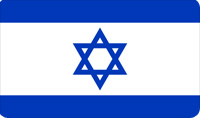Difference Between Yiddish and Hebrew
 Yiddish vs Hebrew
Yiddish vs Hebrew
Living languages evolve and change throughout the years. English, especially, always seems to be adopting new words and phrases. This is also true for the ancient language of Hebrew. Originally spoken over four thousand years ago, it is still a living language today along with its daughter language, Yiddish.
Origins of Hebrew and Yiddish
Hebrew ‘“ is a Semitic language that evolved in the early 2nd millennium BC in the region we now call Israel and the Middle East. It was originally spoken by the Canaanite people who were followers of the Jewish faith.
Yiddish ‘“ is a Germanic language written in the Hebrew alphabet. It was first recorded as a separate language in the 10th century AD. It was originally spoken by members of the Jewish Diaspora who had migrated to Germany as the Byzantine Empire began to falter.
Primary Uses of Hebrew and Yiddish
Hebrew ‘“ has always been the language of the Old Testament, or the Torah. It is considered a holy language and was preserved throughout the centuries of the Diaspora through study of the holy Hebrew texts. As the Zionist movement began to settle Israel in the 19th century, Hebrew was revamped and revived as the national language of the Jewish people both for scriptures and for everyday speech.
Yiddish ‘“ is a creole language created as the Jewish population dispersed over Europe. It combines elements of German and Hebrew. It was used for everyday purposes in the Jewish community. Just before World War II, it was flourishing all over Europe and the United States as a language of philosophy and art.
Where Hebrew and Yiddish are Spoken Today
Hebrew ‘“ is the national language of Israel, along with Arabic. It is also spoken at home by many Jewish families worldwide. Jewish scholars study the Torah in Hebrew and Jewish cantors sing in Hebrew.
Yiddish ‘“ is an official minority language in Sweden, the Netherlands, and Moldova. It is the mother tongue of ultra-orthodox Hassidic Jews. It is also spoken by a quarter of the Jewish population elsewhere and has recently been on an upswing in popularity. In Israel, however, the use of Yiddish is frowned upon.
Similarities between Hebrew and Yiddish
Yiddish and Hebrew share the same Hebrew script. The methods of pronunciation are the same. During the 19th century, both languages experienced a renaissance in secular literature; Yiddish through secular authors that wrote of the everyday Jewish experience and Hebrew as Zionists worked to make a liturgical language fit for everyday use. Both languages are still used by the Jewish community or scholars of Judaism.
Summary:
1.Hebrew and Yiddish are languages of the Jewish people that use the Hebrew script.
2.Hebrew has been spoken for four millennia whereas Yiddish came into being just over one thousand years ago.
3.Hebrew is the official language of Israel and is experiencing increasing popularity as a secular language whereas Yiddish flourished in the early 20th century and then was all but wiped out during World War II.
4.Hebrew can be found in secular, liturgical, and classical forms, whereas Yiddish was always purely secular.
- Difference Between Schizophrenia and Psychosis - March 7, 2024
- Difference Between African and Asian Elephants - March 7, 2024
- Difference Between Sunscreen and Sunblock - February 15, 2024

There is indeed a renewal of interest in Yiddish. More and more young people are interested in Yiddish and start learning it. In order to answer this demand we provide currently a high level distant learning program of Yiddish. Check it at http://eyiddish.org .
Moreover, in order to provide the opportunity for Yiddish enthusiasts to find each other, we have launched the first virtual communitty of Yiddish lovers: http://eYiddish.org/community/
In this article you state that, “Hebrew – is a Semitic language….originally spoken by the Canaanite people who were followers of the Jewish faith.”
There is no credible evidence for this conclusion. The best evidence is the Bible itself. Abraham came from the area of modern day Iraq to the promised land. Later his ancestors spent about 500 years in Egypt. Upon returning tot the promised land (Exodus) they had their own completely developed language. The indigenousness people of the promised land were called Canaanites though they consisted of many differing people groups who spoke several different languages. They were very hostile to the Jewish newcomers and vice versa. Eventually the 12 tribes of Israel displaced them completely. Hebrew never came from Canaanites who followed the Jewish religion. Sorry.
Read more: Difference Between Yiddish and Hebrew | Difference Between http://www.differencebetween.net/miscellaneous/difference-between-yiddish-and-hebrew/#ixzz0ogTadKNh
It would have been accurate sixty years ago to say that the use of Yiddish was frowned upon in Israel. At that time, it was considered important to ensure the standing of Hebrew as the lingua franca of the whole population. Today, if anything threatens Hebrew in Israel it’s adulteration by English, not displacement by Yiddish; so the speaking of Yiddish– as a second language– is certainly well tolerated in Israel now. Yiddish is taught at the university level, and there is even a flourishing Yiddish-speaking theater company.